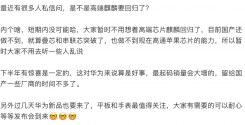This is pretty big. Maybe they are ready to mass produce ssa800 dry version soon
According to the announcement, the first phase of its 12-inch wafer production line has achieved trial production at the end of April this year.
The yield of the first trial-produced power SBD device has reached expectations, and the production capacity is expected to reach 10,000 pieces per month within this year.
Yandong Micro uses the raised funds to invest in the "12-inch integrated circuit production line project based on a complete set of domestic equipment", which is implemented by a wholly-owned subsidiary Beijing Yandong Microelectronics Technology Co., Ltd. The total investment of the project is 7.5 billion yuan, and the target monthly production capacity is 4 10,000 pieces, the process node is 65nm, and the products are positioned as high-density power devices, display driver ICs, power management ICs, silicon photonics chips, etc.
The first stage of the project cycle is trial production in April 2023, and the product will reach production in July 2024; the second stage is trial production in April 2024, and the project will reach production in July 2025.
The announcement pointed out that this project uses the existing purification plant and the completed plant system facilities to carry out partial adaptive transformation, purchase more than 300 sets of equipment, and build a 12-inch wafer production line mainly made of domestic equipment. After the project is put into production, it needs to go through a period of capacity ramp-up. If the capacity ramp-up is not as expected and the market environment demand changes that may exist in the future, it will lead to the risk that the expected benefits of the investment project cannot be realized as planned.


